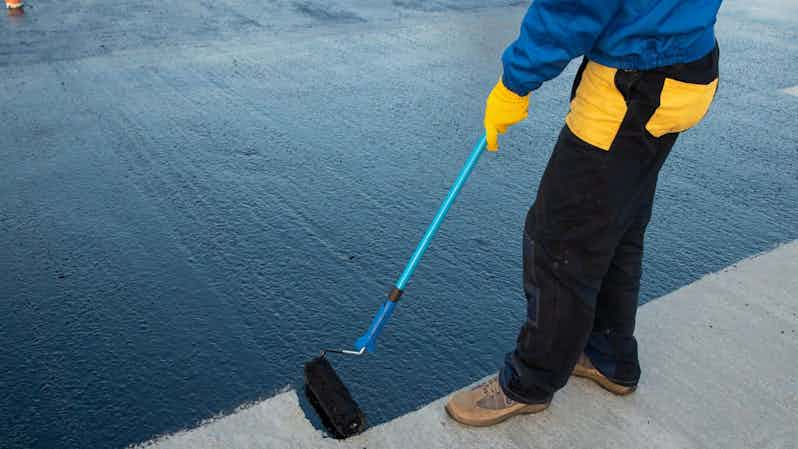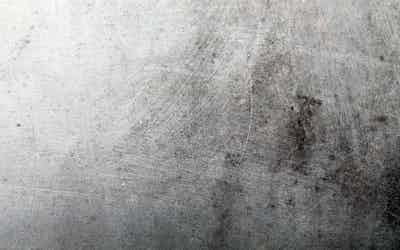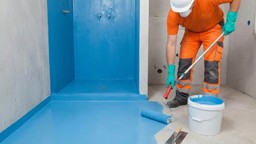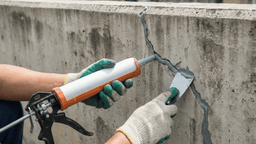10 Common Waterproofing Mistakes to Avoid

Waterproofing failures happen more often than you’d think, and they can leave property owners with costly headaches. Maybe you’ve spotted leaks, mould, or other signs of water ingress in your home.
The good news? Most of these problems don’t appear out of nowhere. In fact, the majority of them can be completely avoided with the right planning, materials and maintenance.
This guide will help you stay one step ahead, so you don’t find yourself scrambling for a quick fix when issues do arise. Let’s get into it.
1. Skipping Professional Assessment
Waterproofing is one of the most critical components of any build or renovation. Due to its importance, it requires precision, the right materials, and a thorough understanding of how water moves through a structure.
Hiring unqualified contractors or guessing your way through can lead to costly failures down the track, and investing in a professional inspection is the best move you can take for long-term security.
Before commencing any type of sealing, make sure the work will be completed to a high standard and in full compliance with Australian standards.
2. Using the Wrong Waterproofing Materials
Not matching the waterproofing system to the job is one of the most common (and costly) mistakes we see. Waterproofing membranes are made for specific jobs, and picking the wrong one can cause leaks, poor adhesion, and even long-term damage to your structure.
Liquid membranes work best with irregular surfaces or areas that require seamless coverage, such as bathrooms and wet rooms. On the other hand, sheet membranes, often made from bitumen, PVC, or rubber, are better suited for larger, flat areas like rooftops or balconies.
If you’re unsure which membrane best fits your project, consult a trusted waterproofing supplier for expert guidance and quality materials.
3. Poor Surface Preparation
Even the highest-quality membrane will fail with inadequate surface preparation. Dust, grease, dampness and uneven substrates can all prevent proper adhesion, leading to bubbling, peeling or leaks down the line. Cracks and holes should also be repaired before sealing.
4. Ignoring Manufacturer Instructions
Instructions are there for a reason. They tell you the right mixing ratios, how thick or thin each coat should be, and how long to let it cure between layers. Following them carefully is the best way to get a strong, watertight finish.
5. Applying Insufficient Coating Thickness
Most membranes need more than one coat to provide full coverage and proper adhesion, one thin layer usually isn’t enough to keep water out.
The exact details for various membrane and surface types can be found in the manufacturer’s instructions. Following these closely ensures adherence to AS/NZS waterproofing standards. As a general rule of thumb, aim for around 1–2 mm per coat for liquid membranes and apply at least two coats. Skipping layers or applying unevenly can lead to membrane failure and leaks.
6. Not Waterproofing Critical Junctions and Corners
Leaks almost always start around drains, internal corners, wall-to-floor junctions, and pipe penetrations. Being lazy and skipping these critical areas allows water to easily find a path through. You can use specialised sealing products, such as corner fillets, joint tapes and flexible sealants to prevent this.
7. Inadequate Curing Time
Rushing the drying or curing process doesn’t give the membrane a chance to fully bond and develop its protective properties. As a result, it cracks, bubbles, or doesn’t adhere properly, which allows water to penetrate.
As previously mentioned, always follow the manufacturer’s recommended curing times. These vary depending on the product, temperature, and humidity, to ensure a durable, long-lasting waterproofing layer.
8. Overlooking Drainage Design
Drainage design is crucial, and getting it right usually requires plumbing expertise. If water isn’t directed away from surfaces properly, even the best membrane can fail.
Poor slopes, blocked drains, or insufficient fall on balconies, terraces, and flat roofs can cause water to pool, increasing the risk of leaks and membrane damage. To prevent problems, you need to ensure all surfaces have the right slope and maintain/clear drainage channels. If you live in heavy rainfall areas such as far North Queensland or Northern Rivers NSW, consider secondary drains or scuppers to manage this effectively.
9. Failing to Test the Waterproofing Before Tiling
This is the final step and should not be skipped, even when facing time pressures to complete the job. Failing to test waterproofing before tiling can be a costly mistake.
A simple water ponding test involves filling the area with water and letting it sit for 24–48 hours. This allows you to check for leaks, weak spots, or adhesion problems. Once the test confirms the membrane is watertight, you’re ready to move on with tiling.
10. Neglecting Regular Maintenance
Regular maintenance is essential to catch small issues before they become bigger problems. If you’re experiencing a leak now, there’s a high chance it’s due to a lack of maintenance.
Schedule inspections for all waterproofed areas. Check for cracks, peeling, or ponding water and clean your drains and gutters regularly. Keeping a simple maintenance checklist helps ensure your waterproofing continues to protect your home or building for years to come.
How to Avoid These Mistakes Altogether
Remember, waterproofing failures are absolutely avoidable. Always start with careful planning, use the right materials, prepare surfaces properly, and allow adequate curing time. Additionally, paying attention to critical junctions, drainage, and post-application testing ensures long-lasting results. For help avoiding these mistakes, read our helpful guide to successful waterproofing.
But above all, hiring licensed professionals guarantees work is done to standard and compliant with Australian regulations, and offers you peace of mind that your home is watertight and safe. Book a waterproofing inspection today to protect your property and prevent costly water damage before it starts.
Final Thoughts
Prevention really is the best measure. It’s always cheaper and less stressful than repairs. So, investing time, expertise, and proper materials upfront will save your home or building from long-term issues.
- Date
- 28/12/2025


